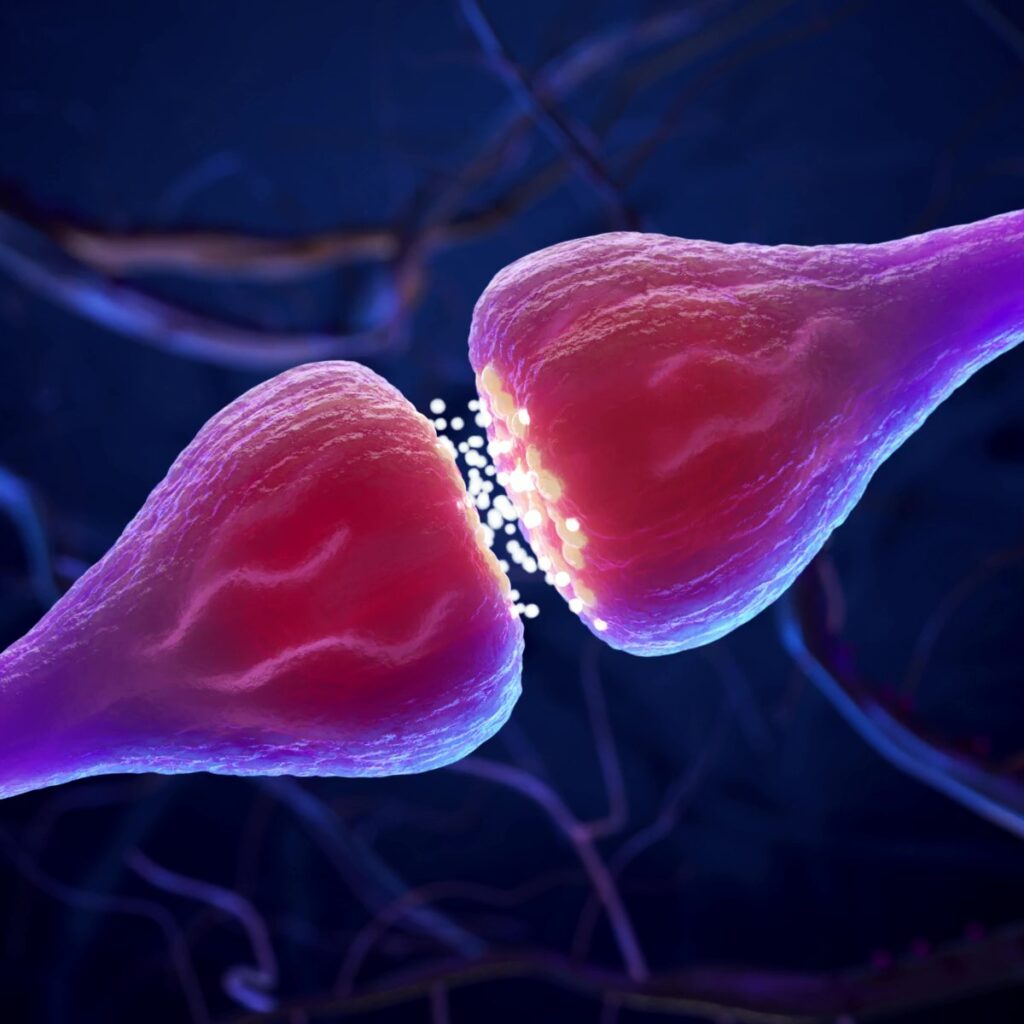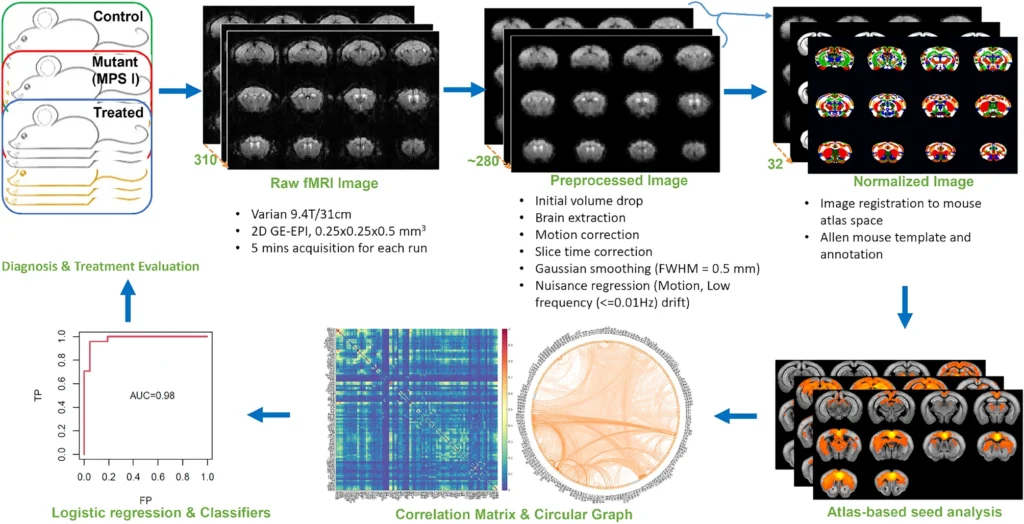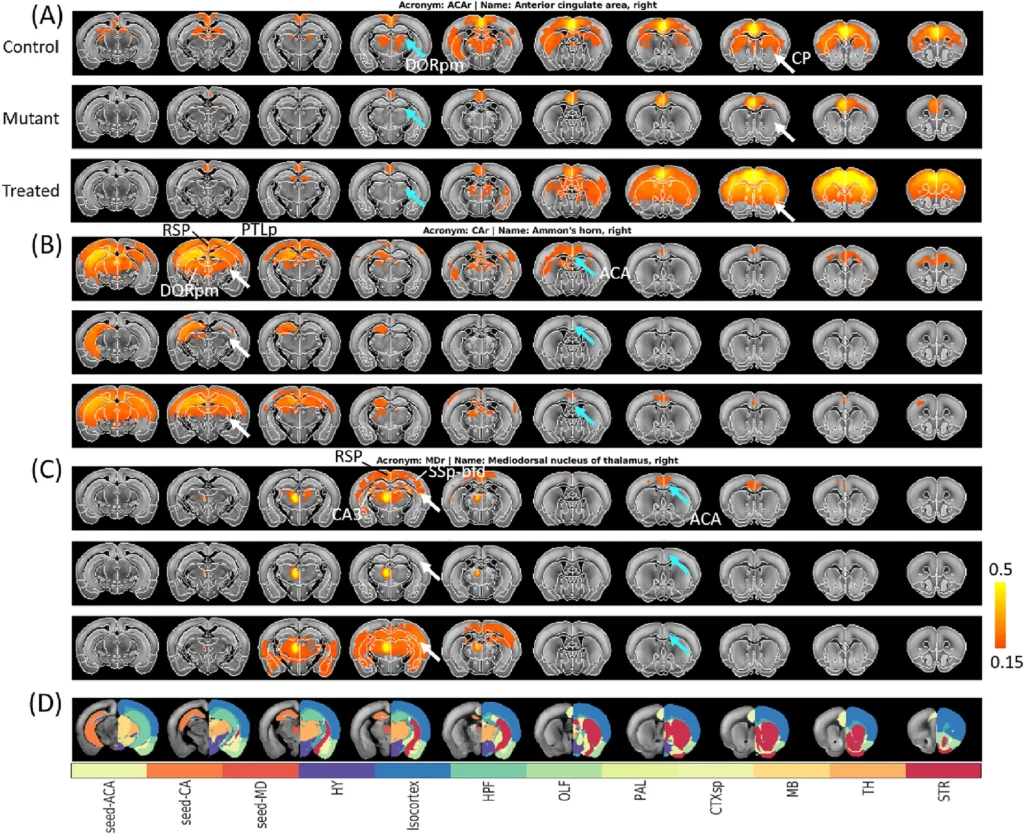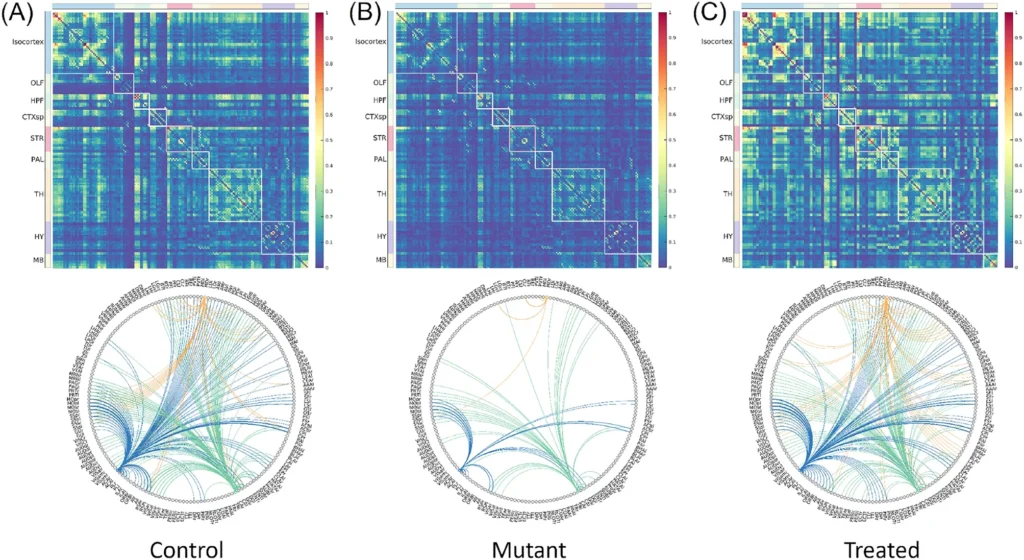From University of Minnesota Medical School 22/08/23

The authors analyzed brain activity using resting state functional magnetic resonance imaging (rs-fMRI) in mice, identifying communication patterns between brain regions. They predicted different groups of mice based on their brain activity using statistical methods. CREDIT: University of Minnesota Medical School
Urban living: A new study from the University of Minnesota [U of M] is the first to demonstrate the ability for gene therapy to repair neural connections for those with the rare genetic brain disorder known as Hurler syndrome.
The findings suggest the use of gene therapies — an entirely new standard for treatment — for those with brain disorders like Hurler syndrome, which have a devastating impact on those affected.
The study was published in the Nature journal Scientific Reports.

Hurler syndrome, also known as mucopolysaccharidosis type I (MPS I), is a genetic disorder affecting newborns that leads to severe cognitive deficiencies and severe physical abnormalities.
Genetic mutations disrupt synthesis of an essential lysosomal enzyme IDUA resulting in progressive brain damage.
Death occurs by 10 years of age.
Current treatments are inadequate — bone marrow transplants are dangerous and lifetime enzyme replacement fails to prevent progressive brain damage U of M researchers evaluated a new form of gene therapy invented at the University of Minnesota — the PS gene-editing system — in mice with Hurler syndrome.
This approach created very high, continuous levels of normal enzymes in the liver that can enter the brain via the circulatory system.

Comparison of resting-state fMRI brain networks was conducted, focusing on seed reference areas in control, mutant (MPS I), and treated cohorts. Different brain regions were identified using cross-correlation coefficient thresholds, revealing restored and unrestored functional connectivity after gene therapy. CREDIT: University of Minnesota Medical School
Using high resolution resting-state functional MRI (rs-fMRI) — a safe, noninvasive and whole-brain activity imaging tool for diagnosis and post-treatment evaluation — investigators first identified neural networks that were disrupted.
Next, they assessed the extent to which brain functions and connectivity were restored following the gene therapy.
The investigators observed the new approach of PS gene-editing produced normal enzymes from the liver that were able to sustain normal connections within specific neural networks.
The technology needed for high resolution rs-fMRI brain connectome imaging was developed by Wei Zhu, a graduate student in the University’s Center for Magnetic Resonance Research.

Walter Low, a co-senior author and professor in the U of M Medical School, referred to the study as a breakthrough: “This is the first demonstration of a gene therapy that has corrected a neurological disorder resulting in the restoration of brain connectivity as confirmed by rs-fMRI.”
“A similar rs-fMRI approach as applied in this preclinical study should be translatable to the clinical setting and patients, especially for those with genetic brain disorders, and for examining the efficacy of brain network restoration and function after gene treatment,” said Wei Chen, a co-senior author and professor in the U of M Medical School and Center for Magnetic Resonance Research.
“The aeonic production of normal IDUA [(Alpha-L-Iduronidase) IDUA is a pnzyme/protein coding gene] in the liver of mice with Hurler syndrome and the ability to traffic enzymes across the blood-brain barrier to correct abnormalities in the brain is a significant achievement,” said Chester Whitley, a co-author and professor in the U of M Medical School.
“This new approach will enable the monitoring of brain connectivity in other lysosomal disorders that affect brain function following gene-editing,” added Perry Hackett, a co-author and professor in the College of Biological Sciences.
Other participants in this study include Lin Zhang, an associate professor in the School of Public Health; Ying Zhang, an informatics analyst in the Minnesota Supercomputing Institute; Xiao-Hong Zhu, a professor in the U of M Medical School and Center for Magnetic Resonance Research; Isaac Clark, a graduate student in the Biomedical Engineering Program; and Li Ou, a former faculty member in the U of M Medical School.



